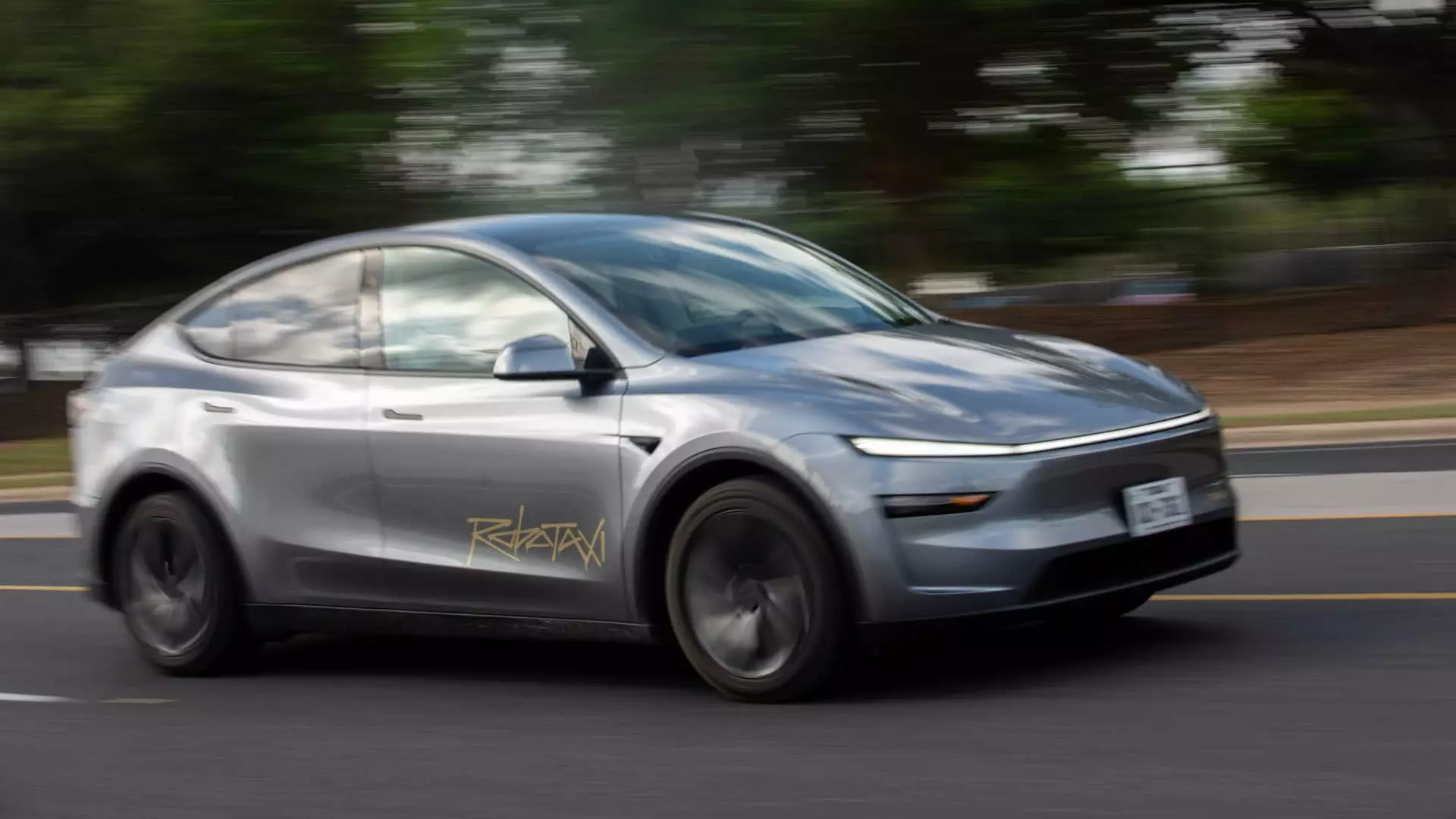Tesla’s CEO Elon Musk has long flaunted the potential of autonomous vehicles, envisioning a future where robotaxis dominate urban transportation. However, beneath Musk’s high-profile announcements lies a stark reality: regulatory frameworks in key markets like California stand as firm gatekeepers, thwarting Tesla’s ambitions of autonomous ride-hailing without human oversight. Despite Musk’s bullish predictions about expanding robotaxi services to bustling metropolitan areas like the San Francisco Bay Area, state regulators have revealed that Tesla’s current operating licenses and procedural standards simply do not permit such bold moves. This disconnect exposes a fundamental overconfidence in technological capability—a narrative pushed more by corporate bravado than by legal or infrastructural readiness.
Tesla’s recent efforts appear more aspirational than operational. The company claims plans to extend robotaxi services in California, but the regulatory statutes tell a different story. The California Public Utilities Commission explicitly states that Tesla cannot legally transport the public in autonomous vehicles without a human driver present. The company’s existing permits restrict it to non-autonomous private services with human drivers — a far cry from Musk’s vision of an autonomous fleet transforming city streets. Tesla’s attempts to navigate these legal minefields show a pattern of over-promising, then having to retreat and adapt to the strict realities of transportation law.
The Legal Blockades and Regulatory Stubbornness
California’s regulatory apparatus is clear: autonomous vehicles that carry passengers on public roads must meet strict safety and operational standards—standards Tesla continues to grapple with. The state’s Department of Motor Vehicles has been cautious, issuing Tesla a “drivered testing permit” since 2014 without authorization for fee-charging, full autonomy, or driverless services. This regulatory stance aims to safeguard public safety, a stance that Tesla’s increasingly aggressive expansion plans seem to disregard or underestimate.
Tesla’s approach appears to be one of ongoing circumvention rather than compliance. The company offers limited testing programs, often under self-described “early access” schemes, which serve more as beta tests than permanent solutions. Meanwhile, competitors like Waymo have secured comprehensive permits, enabling them to operate fully driverless ride-hailing services legally and openly. This contrast demonstrates how regulatory boundaries are often determined by legal familiarity, safety record, and public trust—areas where Tesla’s recent track record with driver assistance systems raises serious questions. The manipulations of marketing language, such as marketing FSD as “full self-driving” when it explicitly requires active driver supervision, only add fuel to the regulatory fire.
Community Engagement and the Lost Art of Transparency
One of the most troubling aspects of Tesla’s current saga is the apparent lack of community engagement and transparency. Local officials in Marin County and other Bay Area jurisdictions have expressed their frustration at Tesla’s secrecy. Instead of consulting and collaborating with local policymakers, Tesla’s expansion plans seem to unfold behind closed doors, treating regulatory approval as a mere formality rather than a shared process.
This approach undermines trust and fuels skepticism, especially when innovative technologies are involved. Given that autonomous vehicle deployment could radically influence city planning and public safety, community buy-in is essential. Tesla’s decision to inform local officials only after having concrete plans or, worse, through internal memos rather than public discourse, diminishes transparency. For a center-right liberal perspective—which values pragmatic regulation balanced with innovation—such opacity is unacceptable. Responsible leadership involves not just pushing technological boundaries but also respecting legal processes and public interests.
Market Dynamics and the Competitive Landscape
Tesla’s ambitious positioning in the robotaxi field faces stiff competition from more cautious yet legally grounded players like Waymo and Cruise. These companies have obtained the necessary permits and demonstrated a track record of compliant operations, earning public trust and regulatory goodwill. Tesla, meanwhile, continues to operate in a gray zone—testing in limited environments or under special permits that prohibit full commercialization or public charging.
This tension highlights a broader market truth: innovation without regulation is reckless, and regulation without innovation stalls progress. Tesla’s aggressive marketing and rollout plans might position the company as a leader in autonomous tech, but its current legal compliance issues threaten to create setbacks that could damage its long-term credibility. The allure of “disruption” must be tempered with respect for the rule of law and community safety.
A Future of Constrained Aspirations
Tesla’s vision, while compelling, is being stifled by a regulatory environment that refuses to bend to corporate hype. The current stance in California and other states illustrates a critical lesson: technological advancements must go hand-in-hand with robust legal frameworks. The idea that Tesla’s fleet will soon be crisscrossing Bay Area streets freely—without drivers—remains an unfulfilled promise, constrained by a legal landscape that prioritizes safety and accountability.
The unfolding story reveals a broader tension within the tech industry: the desire to push forward at a breakneck pace versus the societal need for cautious, regulated deployment to prevent mishaps and protect public trust. Musk’s proclamations often lead to short-term hype cycles, but sustainable progress requires patience, transparency, and adherence to established standards—qualities that Tesla has yet to convincingly demonstrate in its autonomous ambitions.
Note: This article reflects a critique from a balanced, center-right perspective, emphasizing the importance of regulatory compliance, community trust, and responsible innovation over unchecked disruption.

